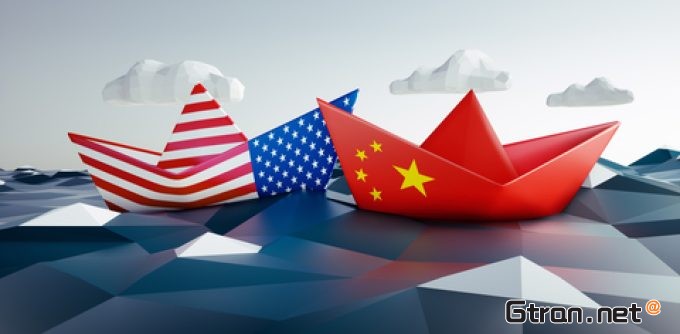The million-dollar-plus charges for Chinese-built vessels calling at US ports would unsurprisingly put inflationary pressure on US importers, suggests ING research. But the knock-on effects could help mitigate the effectiveness of 25% tariffs on the US’s neighbors, according to Xeneta.

Danish bank ING shows that the million-dollar charges for a port call would likely be passed on from shipping lines to US shippers and their customers. A large proportion of the fleet of active containerships was built in China, as will be more than 65% of the current orderbook.
“This means a significant portion of imports entering the US via ports would be directly subject to hefty fines, as these additional expenses would likely be passed on from the carrier to shippers and, ultimately, to importers and exporters,” said ING.
Meanwhile, the 25% tariffs on goods imported from Mexico and Canada, aimed at preventing the neighbors from serving as a backdoor into the US, could be delayed until April 2, “maybe,” according to President Trump yesterday. But Xeneta analyst Peter Sand pointed out that if shipping lines faced a million-dollar fee each time they called at a US port, their shipper customers might choose to avoid these fees by importing goods via Canada and Mexico, mitigating the impact of the tariffs.
“If shippers face new port fees on top of the tariffs, it could change the situation again and fuel further growth in imports from China to Mexico and Canada,” said Mr. Sand. “Ironically, Trump may be indirectly driving one of the very things he’s trying to guard against.”
Meanwhile, for the hapless US importers, the misery doesn’t end with an increase in direct costs associated with the million-dollar port call charges. The cost of US imports by sea could increase drastically also as a result of creating a two-tier market.
“If you can avoid a million-dollar port call… then capacity from Canada and Mexico would obviously look attractive,” Emily Stausbøll, Xeneta’s senior shipping analyst, told us. “Whether then you get a 25% tariff and we then cross it over to the US, I don’t know – but you have to look at all your options.”
A return to Covid-like port congestion is likely too, as shipping lines minimize their vessel calls, and even withdraw service from smaller ports, Ms. Stausbøll said.
“If it is going to cost you for every port call, you’re not going to call at three ports on the US east coast, you’re going to call at one – and then you get congestion.”
Many of the world’s largest vessels were built in China and will likely be rotated onto other trades, such as Asia-Europe, Asia-Africa and Asia-South America, making those markets oversupplied and creating a buyer’s market in terms of tonnage.


